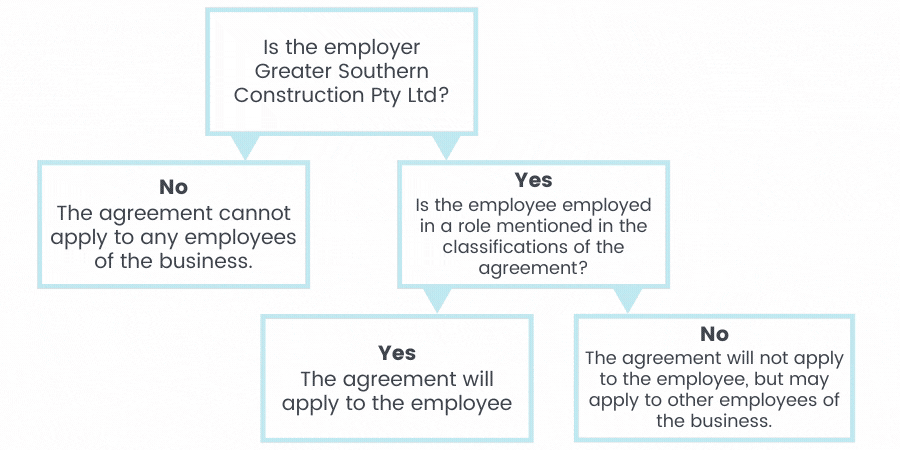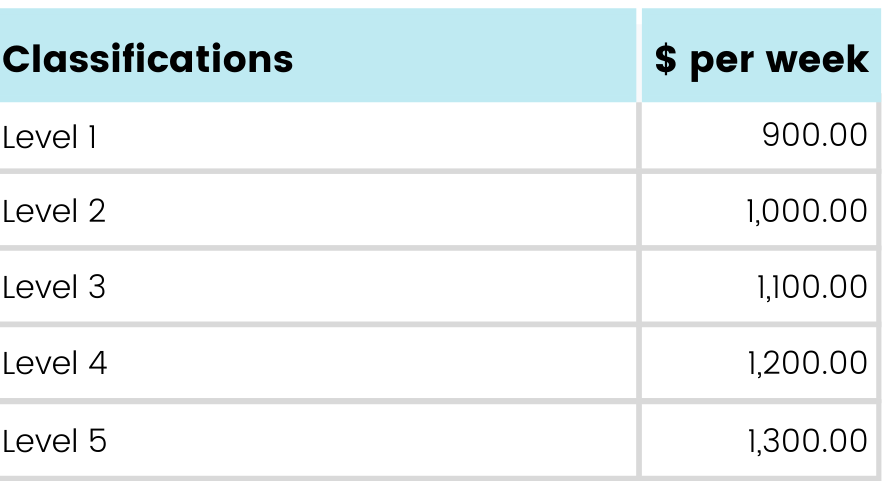Classifications under enterprise agreements
Once you have identified the enterprise agreement that applies to your business, the next steps are to determine:

Which of your employees are covered by the enterprise agreement

What classification applies to each of your employees covered by the enterprise agreement
Identifying the appropriate classification for each of your employees covered by an enterprise agreement is essential for ensuring that you are paying them the correct rate of pay. Significant underpayments can occur if an employee is not assigned a classification or is incorrectly classified.
There are also often penalties applicable under many enterprise agreements if an employer fails to assign an employee covered by the enterprise agreement a classification.
What is a classification?
An employee’s classification is effectively their job. An employee’s job is the collection of duties that they perform.
Is my employee covered by the agreement that covers my business?
An employee will be covered by an enterprise agreement if their job is included within the classifications that the enterprise agreement covers. Usually an enterprise agreement will not apply to an employee if their job does not appear in the enterprise agreement’s classifications.
The classifications themselves are found in each enterprise agreement, and are not the same across different agreements. It is therefore important to pay close attention to the jobs that are and are not included in a particular agreement.
Where do I find the classifications?
Not all enterprise agreements will use the word “classification” – some will use the expression “role”, while others will use the expression of “calling or callings”.
Since an employee’s classification determines what an employee is entitled to be paid, the easiest way to find the applicable classification is in the “minimum wages” clause of the enterprise agreement, as this will explain what each classification is to be paid.
How do I identify an employee's classification?
An enterprise agreement will typically define at least some, if not all, of the classifications so that employers can identify which employees fall within it.
This is usually found in a clause called “Classifications”, or might also be included in the wage clause itself. Because an enterprise agreement is unique to a business, the classification structure is usually based around job titles already used in the workplace.
What happens if someone falls within more than one classification?
It is not uncommon for an employee to perform tasks which fall under two or more classifications; for example, a waiter who also acts as a cashier.
In this circumstance, the question to be answered is: is what is the primary purpose of their employment?
Generally, the “primary purpose” of a person’s employment is determined by what they spend most of their time doing. A waiter who spends 90% of their time performing the duties of a waiter, and 10% of their time performing the duties of a cashier, will generally be classified as a waiter.
However, where the employee’s duties are nearer a 50-50 distribution between classifications, it can become harder to clearly classify them into a specific classification. In such cases, you should obtain legal advice about the specific provisions of your agreement.
What if an employee temporarily performs duties at a higher classification?
Many enterprise agreements allow for employees to be paid the rate of the higher classification when they perform the duties of that role, often called a “higher duties allowance” or a “higher duties rate”. It is important to pay attention to the terms of the particular agreement to see if this applies and how it works.
Can an employee’s classification change?
An employee’s classification can change either deliberately (for example, by a promotion) or by practice.
An employee’s classification may change “by practice” if they spend the majority of the time performing duties other than in their usual role.
What happens if an employee does not fall within a classification?
If an employee does not fall within the classification of a particular enterprise agreement, one of several things can happen:
- they could be covered by another agreement – some employers have a different agreement for each part of their business;
- they could be covered by an award that contains relevant classifications; or
- they could be award/agreement free.



